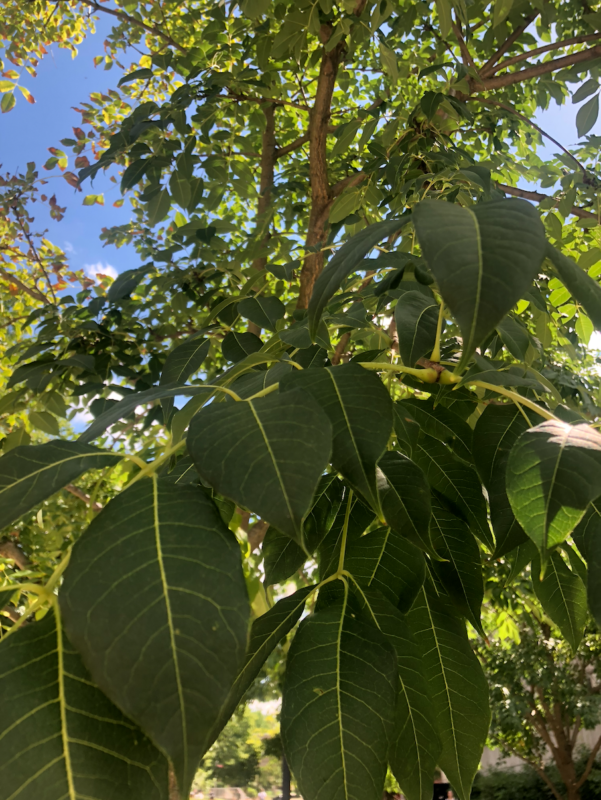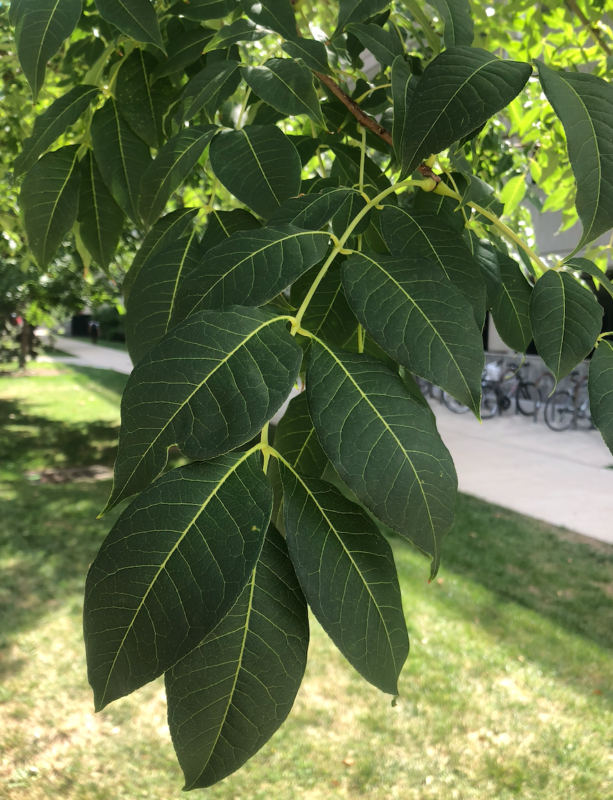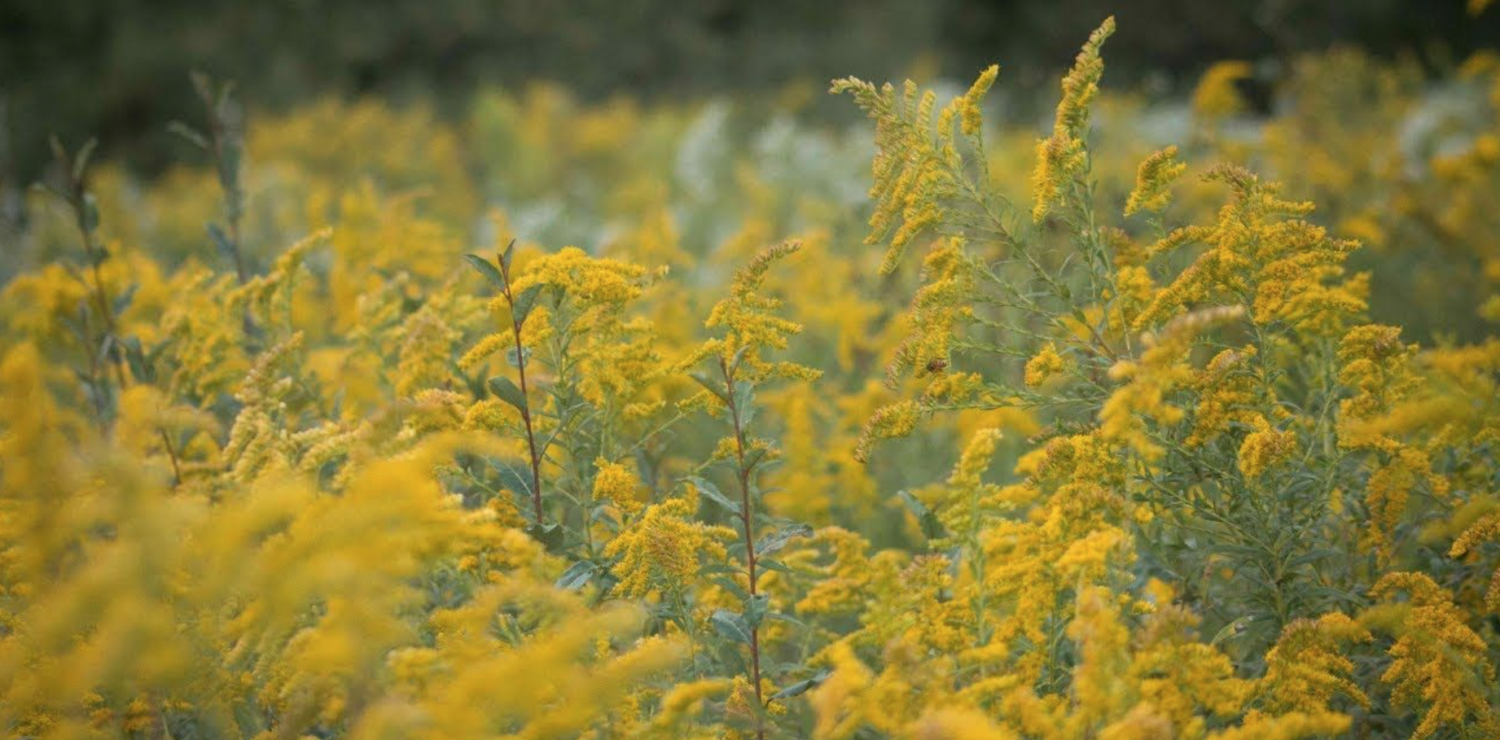I never knew I was “tree blind” until just this week. Now, I feel myself stopping and examining just about every tree I pass. I might not know what every tree I’m looking at is just yet, but here is a list of eight I was able to take my time to identify. When I pass my newly identified trees, it feels like I’m running into somebody I know. I might just have to say “Hi!”
I. American elm (Ulmus americana)
- The leaves are arranged alternate and are simple in complexity. The serrated edges allowed for further distinction.
- This tree was located in the yard of a house between the street and sidewalk in an urban / suburb area.
- In the developing cities of the 19th century, the American elm was the most popular tree to plant. It was common for many streets to be lined with these elm trees. Unfortunately, the Dutch elm disease spread to the United States in the 1950s, and killed many of these elm trees. This proved to be a lesson that diversity in trees was vital to protecting populations of trees in the future (The Morton Arboretum, 2022).
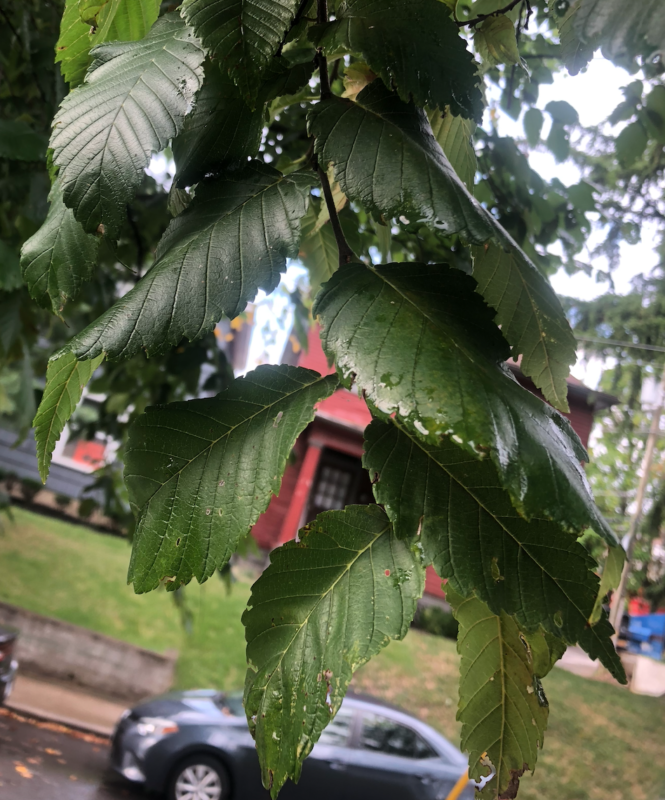
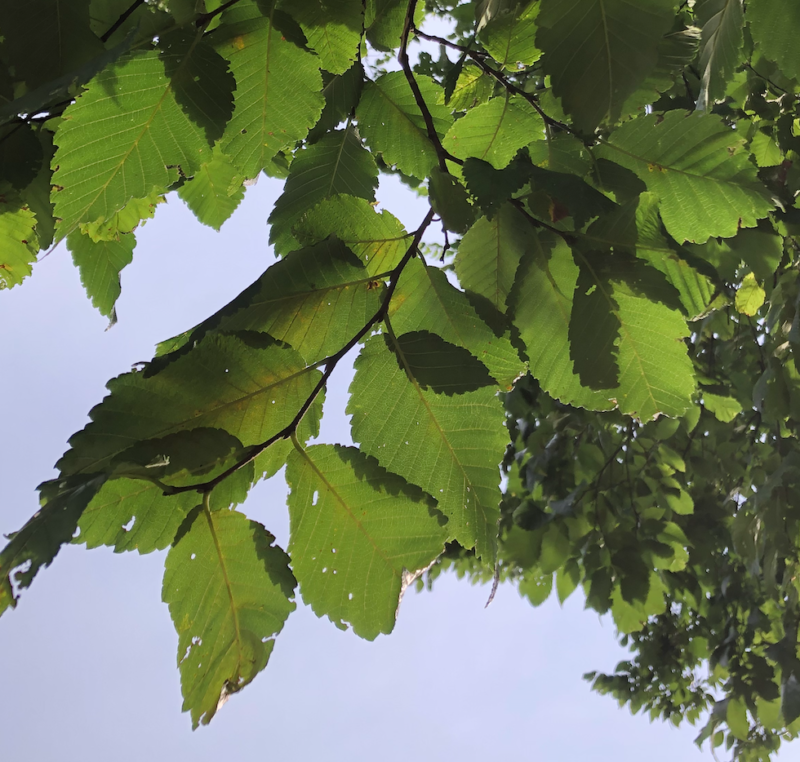
II. Callery pear (Pyrus calleryana)
- The leaves are arranged alternate and are simple in complexity. The additional accessory growths on the branches helped identify the tree–– the small bud / node looking structures, and the round fruit.
- This tree was located in the yard of a house between the street and sidewalk in an urban / suburb area.
- The Callery pear was spread to the United States in 1918 from China when “fire blight”, a contagious disease of apple and pear trees, came through the United States killing the native pear trees. In attempt to protect these trees, scientists worked to cross-breed the native pear trees with the Callery pear tree. This project was later abandoned, and the cross-bred trees were said to be sterile. However, when the hybrids were open to the public, it was found that they in fact were not sterile. Rather, they were actually a very competitive species, now considered invasive (Kling, 2022).
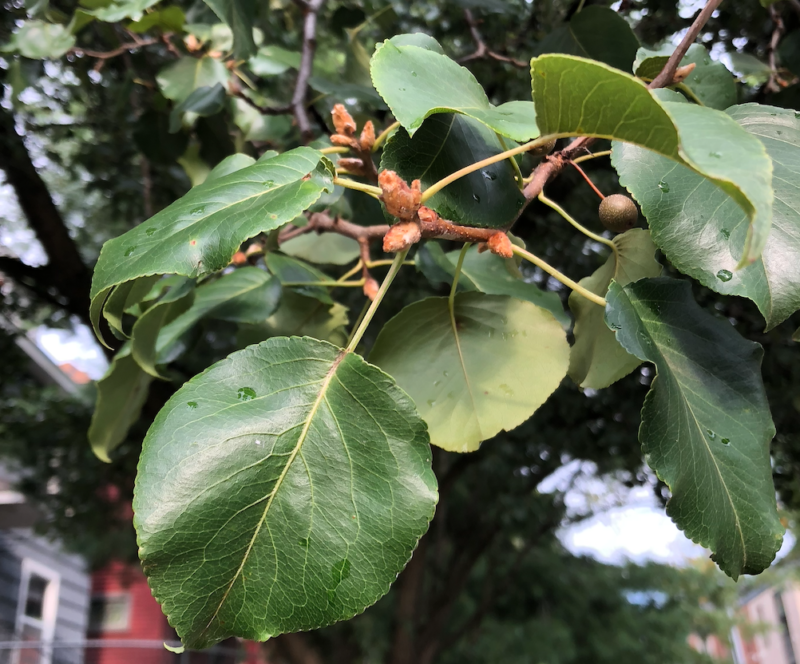 III. Southern catalpa (Catalpa bignonioides)
III. Southern catalpa (Catalpa bignonioides)
- The leaves are arranged opposite and are simple in complexity. The large seed pods of this tree helped to distinguish it.
- This tree was located on campus near a sidewalk and road in an urban / suburb area.
- The Southern catalpa tree was first utilized in 1754 as the wood for fence posts and railroad ties because its wood has a good resistance to rot and grows rapidly. It also interacts significantly with wildlife, as the tree is visited by hummingbirds, is the only host of the catalpa sphinx moth, and feeds bees in the beginning of the summertime (Arbor Day Foundation, 2022).
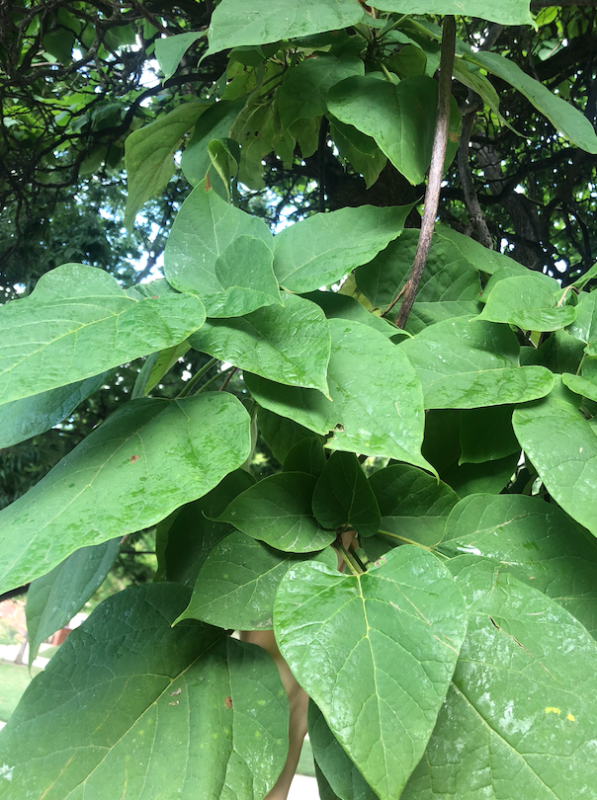

IV. Japanese (Kousa) dogwood (Cornus kousa)
- The leaves are arranged opposite and are simple in complexity. The bright red / orange color and spiked texture of the trees fruits helped to identify the tree.
- This tree was located on campus near a sidewalk and road in an urban / suburb area.
- The “blooms” of the Japanese dogwood are white in the spring. While they might look like petals, they are actually modified leaves called bracts, which protect the dogwoods relatively small flowers (that don’t really look like flowers, but rather a little ball) (Arbor Day Foundation, 2022).
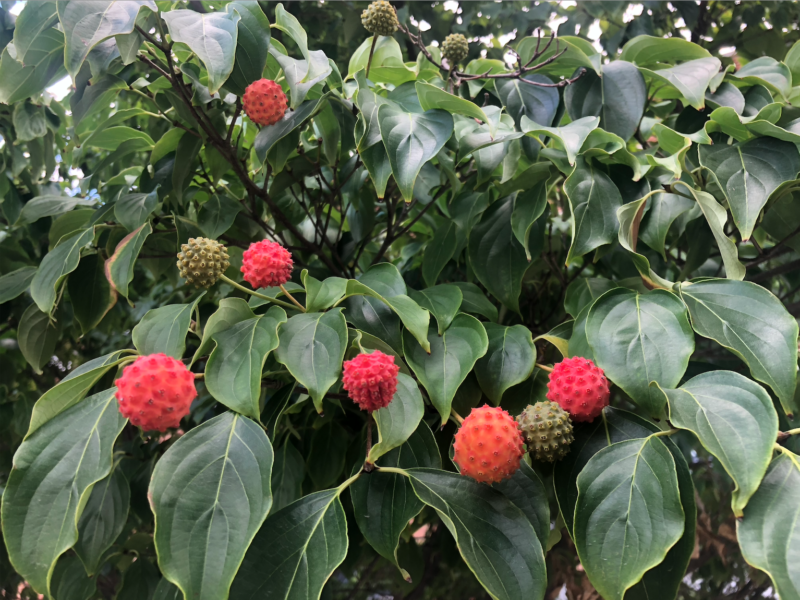
V. Sweetbay magnolia (Magnolia virginiana)
- The leaves are arranged alternate and are simple in complexity. The unique “cupped” shape of the cluster of leaves really caught my eye, and later helped me to identify it. The leaves really seemed to reflect the shape of a magnolia bloom.
- This tree was located on campus near a sidewalk and road in an urban / suburb area.
- The fruit of the Sweetbay magnolia is enjoyed by many different wildlife including songbirds like vireos, towhees, Northern flicker, and blue jays, as well as animals like gray squirrels, white-footed mice, turkey, and quail (Arbor Day Foundation, 2022).

VI. Chinese chestnut (Castanea mollissima)
- The leaves are arranged alternate and are simple in complexity. The bristles on the sides of each leaf following the veins helped me to identify this chestnut as a Chinese chestnut.
- This tree was located in the yard of a house near a sidewalk and road in an urban / suburb area.
- The Chinese chestnut is native to the northern regions of China and Korea. It was brought to the United States in 1853 and 1903. Not only do wildlife enjoy chestnuts, but so do humans (Arbor Day Foundation, 2022).
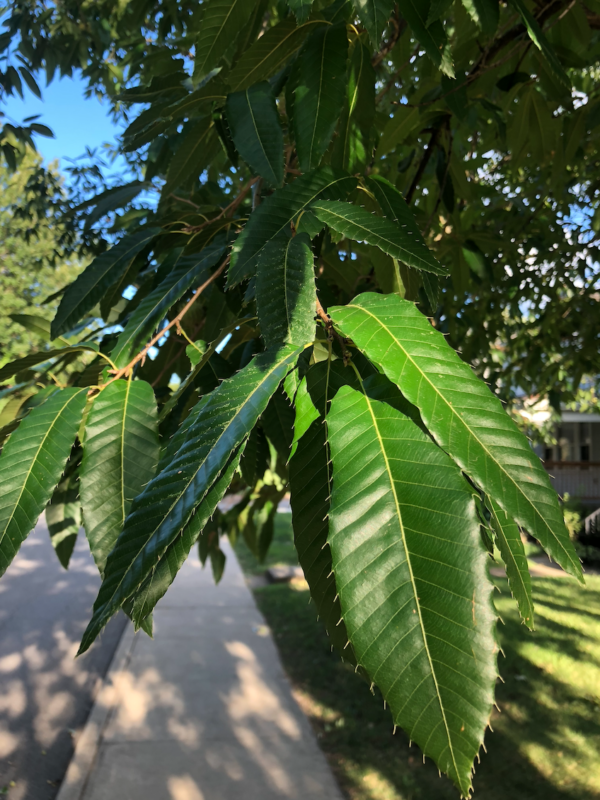
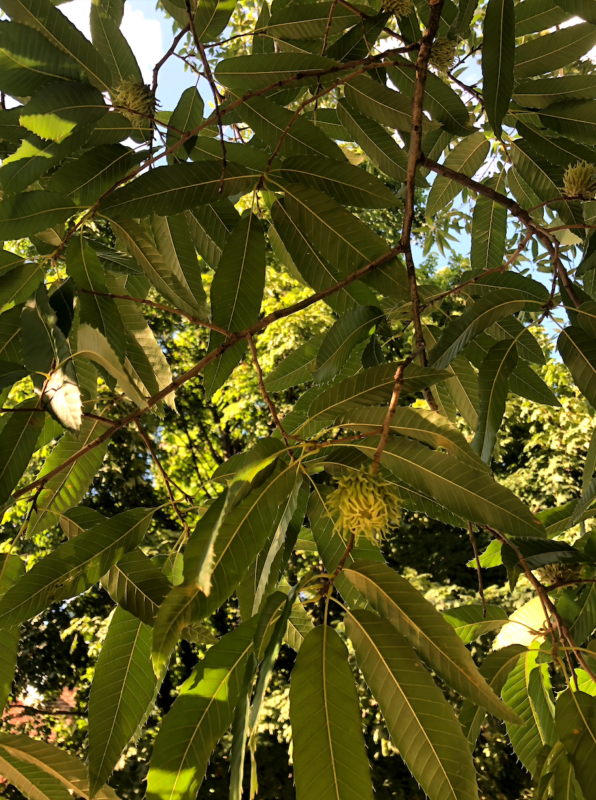
VII. Wild cherry (Prunus avium)
- The leaves are arranged alternate and are simple in complexity.
- This tree was located in the yard of a house near a sidewalk and road in an urban / suburb area.
- The leaves, seeds, and stems of the wild cherry are highly toxic when ingested! The seeds contain a compound called Laetrile, which is a controversial treatment for cancer. The leaves, seeds, and stems contain cyanide which is more toxic when the plant is wilting. Consumption of these compounds can be fatal (NC State University).
- Read more at https://plants.ces.ncsu.edu/plants/prunus-avium/
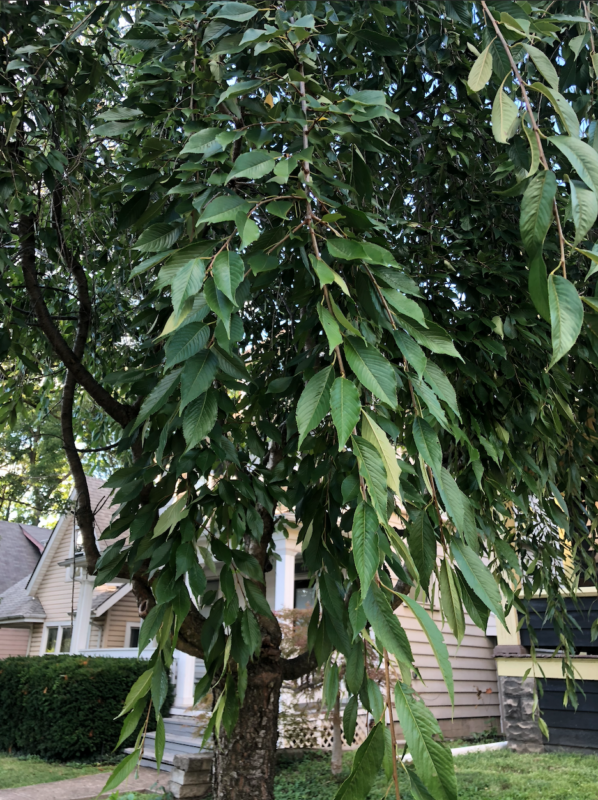
VIII. Common walnut (Juglans regia)
- The leaves are arranged alternate and are compound in complexity (pinnately).
- This tree was located on campus near a sidewalk and road in an urban / suburb area.
- The walnuts from this tree can be eaten by humans and is also used in animal feed. The wood from the tree is useful in the crafting of furniture, and additionally, oil extracted from walnuts used to be a popular thinner in oil based paints (Plant Village).
- Read more at https://plantvillage.psu.edu/topics/walnut/infos
